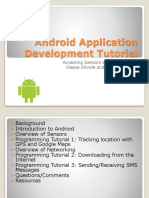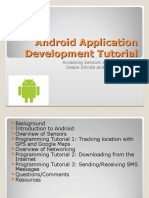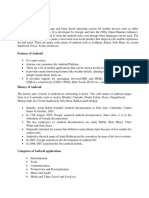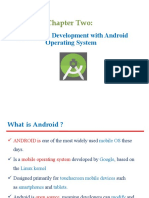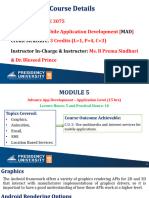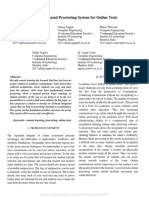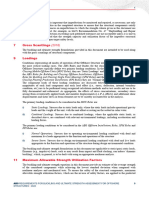0% found this document useful (0 votes)
237 views32 pagesAndroid Tutorial
This document provides an overview and tutorials for Android application development. It begins with introductions to Android and its architecture. It then covers topics like sensors, GPS, networking, and SMS. It includes 3 programming tutorials - one on using GPS and maps, another on downloading from the internet, and a third on sending/receiving SMS messages. It provides information on setting up the development environment and creating Android projects and applications.
Uploaded by
Bhaskar Rao PCopyright
© © All Rights Reserved
We take content rights seriously. If you suspect this is your content, claim it here.
Available Formats
Download as PPT, PDF, TXT or read online on Scribd
0% found this document useful (0 votes)
237 views32 pagesAndroid Tutorial
This document provides an overview and tutorials for Android application development. It begins with introductions to Android and its architecture. It then covers topics like sensors, GPS, networking, and SMS. It includes 3 programming tutorials - one on using GPS and maps, another on downloading from the internet, and a third on sending/receiving SMS messages. It provides information on setting up the development environment and creating Android projects and applications.
Uploaded by
Bhaskar Rao PCopyright
© © All Rights Reserved
We take content rights seriously. If you suspect this is your content, claim it here.
Available Formats
Download as PPT, PDF, TXT or read online on Scribd
/ 32
